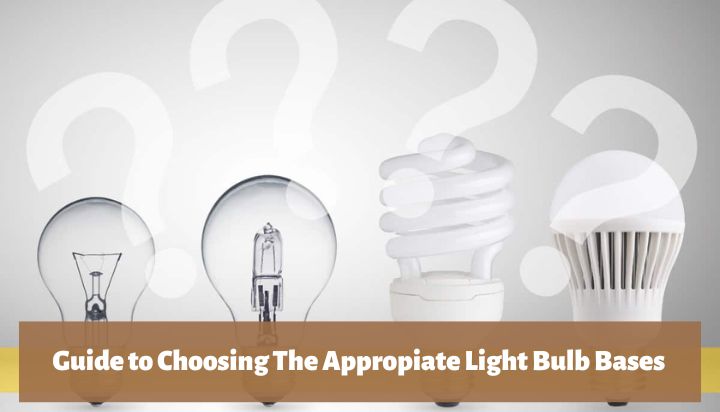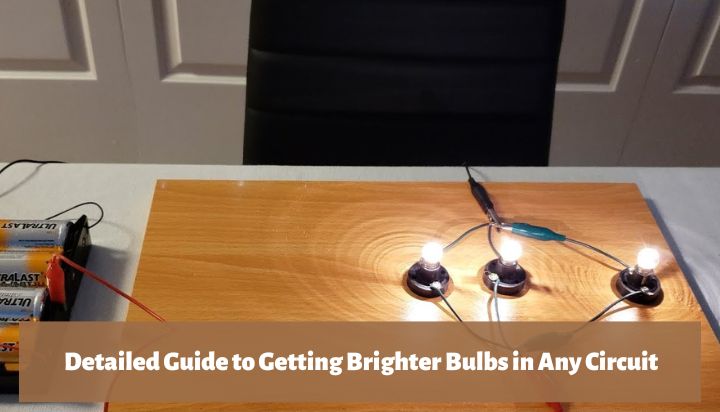The fast and continuous change of brightness level in LED lights is called flicker. This can be visible (under 3 – 60 Hz) or invisible (above 60 – 90 Hz) which can negatively affect the human body.
So, are flickering LED lights dangerous? Yes, if the flickering level is higher and occurs daily. It effects on eyes, brain, and behavior patterns and causes irritation in a bad way. that’s why the flickering LED lights seem harmful.
To know more about the dangers and causes of flicker in LED lights with solutions, keep on reading till the end!
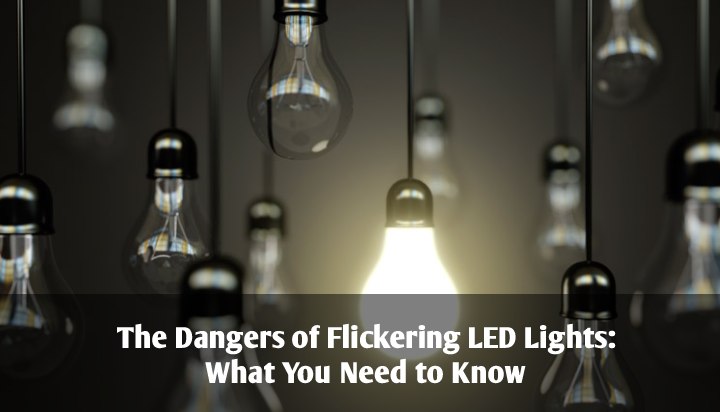
Flickering LED Lights Aren’t Dangerous, But They Can Be!
Sudden flick of LED lights might not be harmful since it’s just a rapid repeated change of brightness. But, if it’s happening regularly, this can be bad for the brain, eyes, and other parts. Here are the dangers of LED lights flickering:
- The high frequency of flicker can cause your eye’s visual pattern to have seizures.
- Invisible flicker at below 165 Hz will result in your head facing sudden mood swings or pain.
- You’ll suffer from photo epilepsy in long run.
- Children below 10 years will face higher sensitivity in the eyes which can damage the eye based on the frequency of flicker.
- Stroboscopic effect (things that are in motion will stop suddenly). This can result in the apparent stop or slow down of the rotating stuff when seeing.
- Repetitive behavior (which happens to those folks suffering from autism).
- You’ll face frequent migraine or intense paroxysmal headaches that ruin the focus.
- If the flickering level is higher in LED lights, you will face interruption in the visual aspect and feel nausea or vomiting.
- Causes illnesses like fatigue, eyestrain, blurry vision, low sight, weakness, tiring of the eyes, and so on.
- Due to that, normal human eyes will feel sensitive to light.
- The invisible flicker of LED light in long-term exposure can cause malaise to some form of epilepsy.
Is It Normal for LED Lights to Flicker?
No, It’s abnormal! LED lights that are good in shape won’t flicker unless suffering from issues. Take a look at a few reasons that cause LED lights to flicker:
- Faulty drivers (constant voltage or current) that blocks the path to flow the current or power in stable condition.
- Loosely connected bulbs can sometimes show visible flicker.
- If the wiring of the LED lights is cut or torn apart, the LED lights can have a flicker issue.
- LED lights can flicker if they are linked with a circuit using incompatible dimmer switches.
- A lot of times low-quality bulbs when reaching their expiration date can flicker.
- The sudden increase of current or voltage in a circuit (aka power surge) can cause a flicker issue in LED lights.
Troubleshooting– What Should I Do If My LED Lights Flicker?
Seeing the flicker will gift nothing but a bad headache. To get rid of it, learn how to fix flickering LED lights by trying the given methods:
Issues | Causes | Solutios |
Flickering fast and suddenly going slow like a roller-coaster. | Bad drivers. | Change the drivers and use a full-size one that separates the noise and power. |
Flicker in an irregular way. | Loose wire or bulbs. | Check the wiring and fitting of bulbs. Then, replace the wires if it is faulty and tighten out the bulbs. |
Flicker a few times per day at a 1 – 2 rhythm per second. This happens at the same time of the day or week. | The remote control’s signal is shifting over the power line. (TF or CAB control) | Detach the control signals from the power line and insert a special power line filter. |
Regular flicker in 1 – 10 times per second. | Using incompatible dimmer switch. | Replace the dimmer switch and ensure to use a compatible one. |
Flicker a lot and sometimes doesn’t work. | Faulty LED lights. | Change the old LED lights with new ones. |
Lights flickering in an incidental or irregular motion. The length of the flicker is sometimes short or long based on light intensity. | Power surge due to using big loads like large copiers or elevator motors. | Stop using the larger copiers or elevator motors in the same electrical line of LED lights. To do so, separate the electric power for these. |
Nonstop flickering at 100Hz frequency. | Connected with other light sources. | Attach pure DC power supply instead of AC. |
Is It Dangerous to Leave a Flickering Light On?
The effect of leaving the flickering light on is harmful to the visual and mental health of humans as well as creatures like honeybees, flies, bugs, and so on.
Not only will it harm animals but also damage the eyes of humans. In the home electrical service, the flicker can cause fires in the wiring setup.
If the level of flickering in lights seems strong which is happening almost daily, then this can cause serious issues in electrical supply services like shock or blast.
Flicker Types | Frequency | Effects |
Low-frequency fluorescent | 100 Hz | Headaches or eye stress |
Malfunctioning fluorescent | 50 Hz | Neurological issue |
Low-frequency fluorescent | 100 Hz | Physiological issue |
Amplitude-moderated flickering light or Xenon gas discharge photo-stimulator | 3 - 75 Hz | Neurological issue |
Low-frequency fluorescent | 100 – 120 Hz | Eye problems |
Leaving the flickering light will be bad if done for a long period and most experts suggest replacing ASAP.
Wrap Up
As you now know whether are flickering LED lights dangerous or not, it’s time to make the changes for the better.
Harming the eyes and brain health won’t be a good idea since you’ll suffer. So, it’s wise to replace the LED lights that are flickering to enhance vision and see in comfort view.
Hope this guide helps you with needed details about the harmful effect of flicker in LED lights and be sure to try the troubleshooting methods. Good Luck!

![How to Reset Feit Smart Bulb & Reconnect? [Explained]](https://wiringsolver.com/wp-content/uploads/2023/01/How-to-Reset-Feit-Smart-Bulb.jpg)
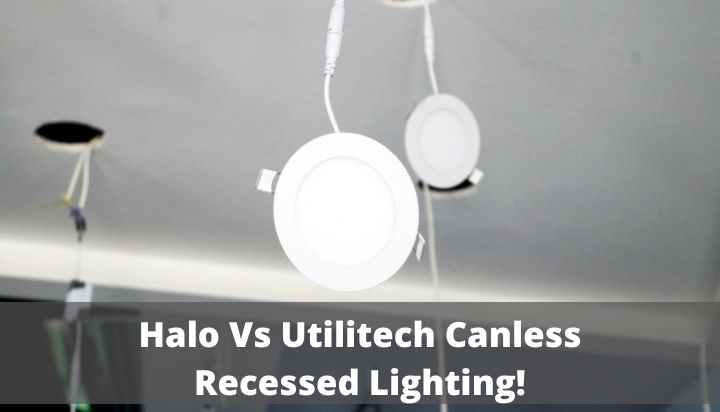
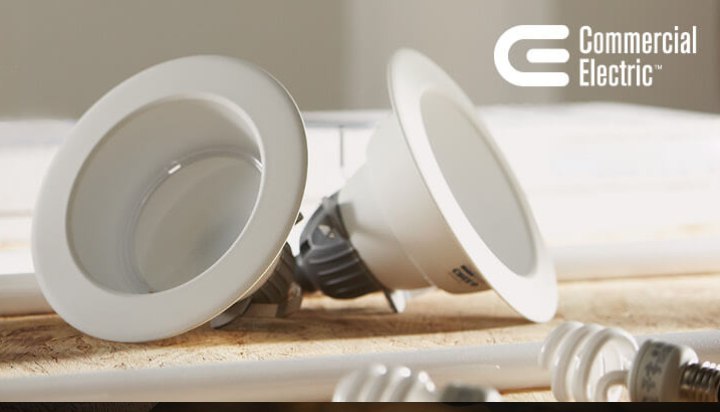
![How To Remove Plastic Ceiling Light Cover? [3 Methods]](https://wiringsolver.com/wp-content/uploads/2021/09/How-To-Remove-Plastic-Ceiling-Light-Cover.webp)
